Sound: Tracked









Don’t you love noisey music, well we have the product for you! The Upgaininator 9000 amps up your music by 9000% within seconds! Let’s run down an imaginary (but realistic) scenario: Look! It’s you happily enjoying your music ... but oh no! Here I come along, asking if there can be something more in your music and you’re like “okay, I guess.”
(He is happy :))



Now you’re happy because the world is so much of a better place!!!

Buy now!! Only $9000 (why else do you think that 9000 is in the name?)

P. 6 -- Meet the Team
P. 8 -- Fugazi
P. 14 -- Music in Movies
P. 16 -- Made to Play
P. 20 -- Music Through the Ages
P. 24 -- Imperfectly Pitched


Harlan Trachtenberg is a hard rock enthusiast and loves the greater realm of music. He’s lived in Austin all his life with his family. He enjoys playing guitar, participating in the AVP elective at LASA, and watching so-bad-it’s-good comedies in his free time. He would like to continue playing music after graduation.
Kieran McDonald is a only child born in Austin, Texas. His hobbies include various outdoors activities like camping, hiking, and fishing. He plays guitar and indulges in classic rock regularly. He is interested in auto mechanics and intends to join the Navy.


Jacob Salas is a freshman at LASA and a 9 year Austin resident. He loves music, specifically rock, and plays the guitar, bass, and tuba. He lives in south Austin with his parents, brother, and dog and loves adventuring in the woods behind his house. He intends to live a life full of music and adventure after high school.

Andres Basabe is a Venezuelan born music enthusiast who moved to Austin in 2020. He is a freshman that attends LASA! He enjoys listening to indie rock and playing guitar in his freetime. He lives with his parents, younger sister, and a hamster whose company he enjoys very much. When he graduates, he intends to spend his days by a lake playing in a band with two of his friends.

Ben is a student at LASA high school in Austin, Texas. Ben enjoys Scouting with Troop 61, and is currently preparing to complete his Eagle Rank and take a trip to Philmont in June. He is also an avid french horn player, and proud LASA band member. Upon graduation from LASA he intends to carry on his current passion in the LASA Aircraft club by studying aerospace engineering.




What’s the first thing that comes to mind when you think of Washington DC? It’s probably the government. But what about the people who don’t work for the government?
“But I, like my parents, didn’t work for the government,” said Ian MacKaye, a prominent musician from the area, “I never had to do with the government. To us, people who live in Washington, the Government is really intrusive.” There were many people, mainly kids, who were living in this federally run city who didn’t get to have a voice, so they made a voice for themselves: Punk. Kids all over DC in the ‘80s were making bands, booking shows, and starting record labels. Ian MacKaye was one of those kids.
“It began with Ian and his entry into punk,” remembered Joe Lally, another prominent DC musician, “which was just that it was so much earlier than mine as far as being active because he played in a band and then they wanted to put out the single of that band or a documentation of the band having existed after it broke up.”
MacKaye and Lally were in a band together along with former Rites of Spring guitarist and vocalist Guy Picciotto and drummer Brendan Canty. With both MacKaye and Picciotto on guitar and vocals, Lally on bass, and Canty on drums, they together made Fugazi in 1987. Fugazi? What does that even mean?
“I was reading a book by a guy named Mark Baker,” says MacKaye “It’s an oral history
from Vietnam, and it includes people, Vietnam veterans, people in the medical staff, and even some Vietnamese people. And as in most cases, and especially in the military, there’s a lot of slang. So in this book, go to the glossary in the back of the book and in this particular glossary, it just said a f*cked up situation. That’s all it said, but I thought that in a way it was a really beautiful name because it was very obscure. Nobody would know what it really meant.”
“In 1996, we were playing a show in Singapore,” continued MacKaye, “and these two kids came up, a brother and sister, teenagers, and the brother, who’s probably 15, said, What does Fugazi mean? So I started to give them the same rap. And the sister, who’s probably 17 or 18, she said, f*cked up, got ambushed, zipped in. So in fact, it was an acronym, but she had found another source, and I was shocked. I had no idea until that moment that that’s what the acronym was. So that means you f*cked up, you got killed,
“I started listening to music pretty seriously when I was young,” said Lally, “You know, I was about nine or ten. I really got into Otis Redding and James Brown, and that followed with a lot of funk and soul and R&B of what was going on in the early seventies because that’s like ‘72 or ‘73 when that started. It’s kind of insane that I’m old as hell now is what that means.”
MacKaye said “I don’t really care whether it’s blues or jazz or seventies rock or soul or funk or afrobeat or tropicalia or gospel or hardcore punk or seventies punk. I don’t care. All I want to do is believe it. I just want to believe that the people making it mean it. And that’s what I find attractive. So at the time Fugazi started playing, Brendan, Guy, and I worked in a record store. So we listened to so much music all the time. It wasn’t as if we heard a band and wanted to play that type of music, rather, we wanted to play music and that was what came out of us.”
Lyrically, Fugazi differed from other D.C. bands, too. Generally, they were more introspective but also talked about politics
and then you get zipped into a body bag.”
Sonically, though, Fugazi differs from other DC bands. They took more influence from classic rock, R&B, soul, jazz, and even some band called Scritti Politti.
Nicki Longoria, a fan from San Antonio said, “Minor Threat or other DC hardcore bands at that time would sometimes specifically call out politicians, like Reagan or Alexander Haig. Fugazi never really did that so much as just call out the political landscape in general.”
Something important about Fugazi is that they ran everything themselves (but of course with some help along
“I just want to believe that the people making it mean it.”





the way). They released their records on MacKaye’s label, Dischord Records, they booked shows, they wrote the songs, they managed their own money.
“We never had a lawyer, we never used contracts, we split everything equally 25% each,” said MacKaye, “There isn’t somebody who gets paid more than somebody else. We did all of our own driving, we dealt with all of our own gear. We had people who work with us. We had friends who were part of our family… basically, we were completely autonomous”
Lally referred to this as learning to exist outside of the system.
If they’re so prominent, how come I never see any of their shirts around or something? Simple… they didn’t want to commercialize themselves.
“[commercializing] has no place in songwriting,” said Lally, “Then what else would be the incentive but the money or to sell a song to a commercial. There is no other incentive than the money. So if you had some respect for the song you wrote to not live in that place, then you just don’t want to put it there.”
They didn’t sell merchandise besides music for another reason though, according to Longoria.
“It’s more like putting the importance on the music. You don’t have to buy the shirt and adopt the uniform. You just literally let the song speak for themselves.”
Okay, now imagine this: you want to go see some new music live and the tickets are only $5. Yeah, $5. That’s the case with Fugazi. This helped attract more people to their shows and increased their wordof-mouth reputation. But how did that work?
“We said we want a $5 ticket,” said MacKaye, “So if we’re playing in a thousand capacity room and we’re going to say $5, so we say, okay, that’s a maximum of $5000 our gross. So we would never ask for a guarantee, we would ask
mouth,” according to him.
“for instance, we played shows in Florida,” continued MacKaye, “and there’d be 30 white power skinhead guys. So if they’re slam dancing, they’re probably beating the sh*t out of people. We think of our audience as essentially our guests, right? They wouldn’t have been there had we not asked them to be there. So if I invite you and ten of your friends to my house for dinner and one of your friends pulls out a butter knife and stabs another person, I’m going to put a stop to it. It’s inappropriate behavior, right? People are being injured.”
Even though Fugazi is not that well known, their fans are devoted.

“I think and jokingly say this a lot when I think to myself: what would Fugazi do? I’ve done that lots of times throughout my life and I think it’s just really important.” said Longoria.
for a percentage. So we said we want 60% of the door. Now, the promoter no longer is taking a risk because if six people show up and there’s $30. That means we got $18. Right. We still only get a percentage. So there’s no risk to the promoter.”
I imagine with low ticket prices and a loud band, these shows could get violent… Did they? Fugazi made sure that they didn’t. MacKaye, when he saw people slam-dancing, would break it up, because he was “the guy with the mic and the big
“ It was usually the other diehards with you in the front,” she continued later, “we were all like we’re in it together. We’re all excited. So it’s that kind of feeling of abandon and just singing along and dancing and whatever. It was great.”
Fugazi broke musical norms on multiple levels and people love it. They helped make punk take on a brand new meaning and a brand new sound and they functioned like no other band. Fugazi was different.
Fugazi at Dickinson College, Carlisle, PA 2/13/88 by Andy Perseponko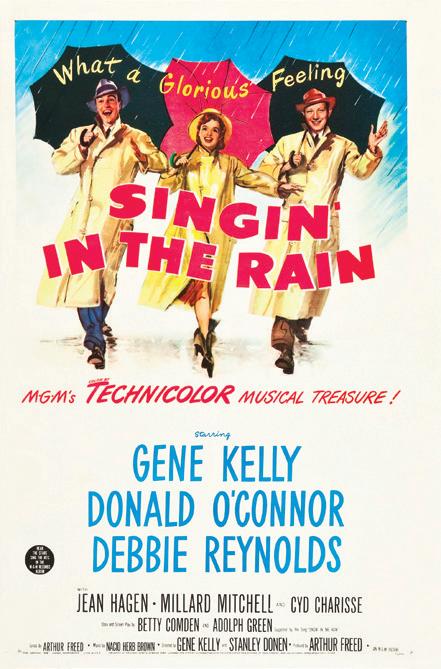








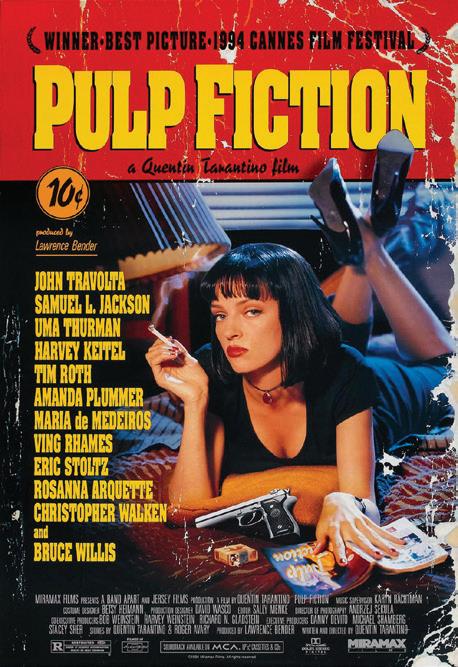
In 1908, the French movie “L’Assassinat du duc de Guise’’ was released, which was the first movie with its own soundtrack. In the following 115 years, music has remained prevalent in movies and has even defined eras for teenaged viewers. For example, the soundtrack to Superfly was made by Curtis Mayfield and it ended up grossing more than the movie. In fact, the soundtrack made $5 million while the movie made $4 million. Here are some of the most notable examples leading up to the year 2000.

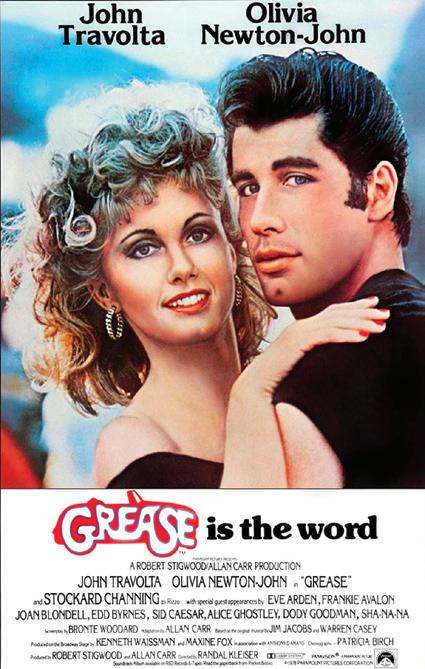 : A New Hope Title”
1986 - Top Gun “Danger Zone”
1994 - Pulp Fiction “Misirlou”
1978 - Gr ease “Summer Nights”
1994 - Forr est Gump “Fortunate Son”
2000 - American Psycho “Hip to be Square”
: A New Hope Title”
1986 - Top Gun “Danger Zone”
1994 - Pulp Fiction “Misirlou”
1978 - Gr ease “Summer Nights”
1994 - Forr est Gump “Fortunate Son”
2000 - American Psycho “Hip to be Square”
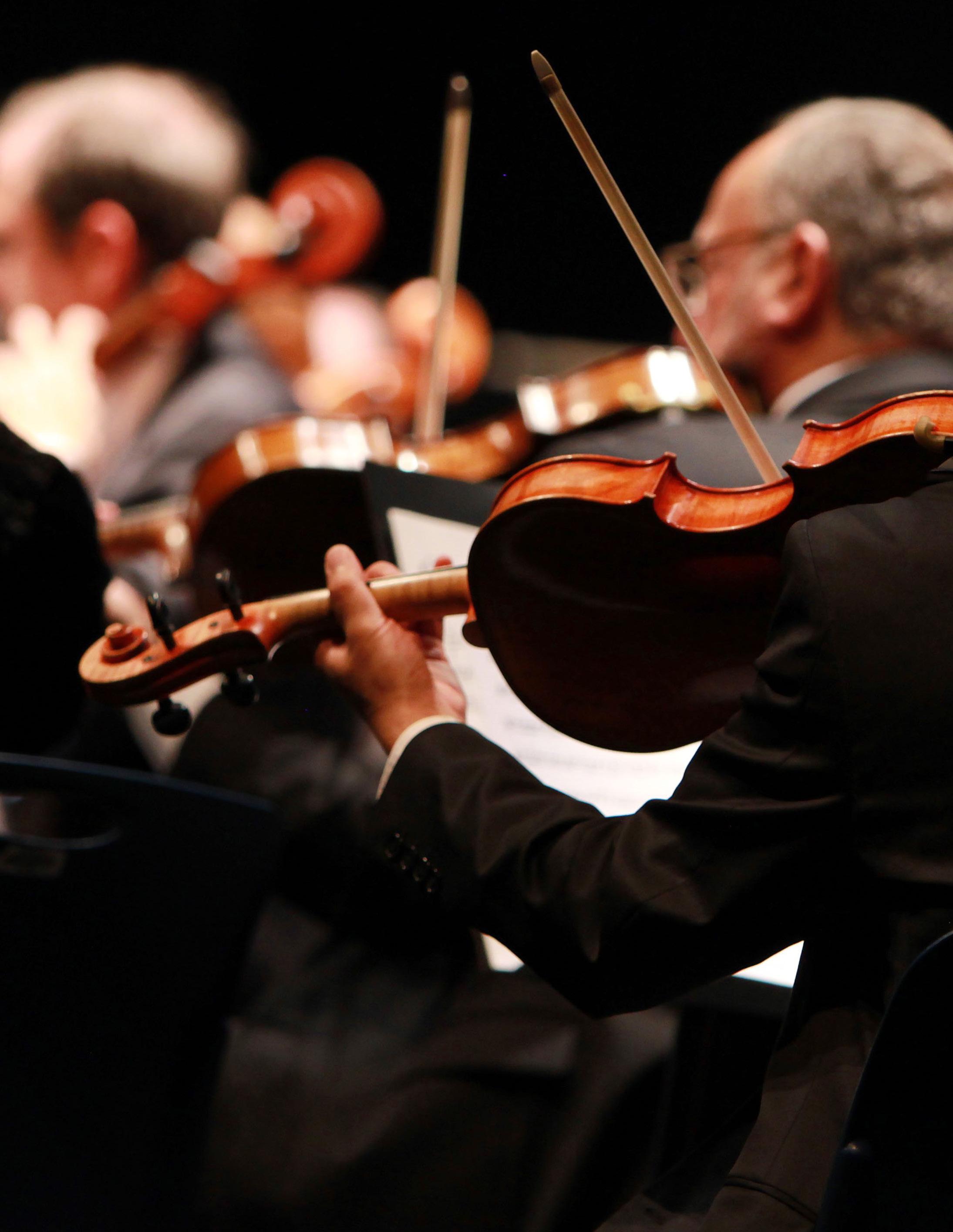 By Ben Stewart
By Ben Stewart
The soft strum of a guitar. The sweet whistle of a flute. The low singing of a cello. Hundreds of unique sounds like these are all around us, but we rarely stop to think about the instruments behind them.
Many people have played an instrument at one point or another, whether playing French horn in a middle school band, a viola in a high school orchestra, or an electric bass in a garage band with their friends. People want to be a part of the music they listen to. Countless people all over the world dedicate their lives to selling, manufacturing, and entertaining musical instruments, making them ready for musicians to use to enrich people’s lives.
Clint Strait is the third generation owner and president of Strait Music, a local music shop that sells various instruments, their acessories, and offers repairs. He says instrument popularity aligns closely with popular music.
“I mean, everybody wants to be a guitar player right? A lot of people don’t play clarinet in their 30s or play trumpet in their 40s” Strait said. “A lot of people just migrate to guitar mainly
because it’s the main instrument of all the music that we listen to.”
Strait Music sells and rents instruments to many student musicians all over Austin. Many students rely on rentals like these for participation in their middle and high school bands and orchestras.
“We have thousands of band and orchestra rentals to local middle schoolers, locals, and kids in the greater Austin area,” Strait said.
While the products and services rendered by Strait Music are vital for beginners, they are also helpful for musicians of all ages.
“We do have a lot of professional musicians,” Strait said. “A lot of times those are people that utilize our really experienced repair technicians.”
Strait Music has also been a favorite for professional musicians due to its reputable repair services. Most instruments require specific and fine-detail repairs that musicians cannot perform themselves.
Repairs are a crucial part of maintaining the instruments we use. Mary Machuga is the Business Operations Manager for the Ohio State University Marching Band, a top college marching band in the country. With a band that size, there are a lot of instruments to keep

track of and maintain. She says that they have a system for conducting these repairs.
“At any time we can have close to 600 instruments checked out in the fall,” Machuga said. “We contract with an instrument company in Columbus from which we have a couple of people on-site to do our instrument repair and work with us for our inventory.”
Jacob Glorioso is a student staff member finishing his fifth year in the Ohio State Marching Band. He says that most repairs that the university needs can be performed on-site and
instruments only are shipped off to a different location when the instrument is severely damaged.
“We can do anything from bent ends to stuck slides, tough stuck valves, stuck mouthpieces, and most fabrication,” Glorioso said.
“It’s when we have things like someone broke their lead pipe and the horn is dented. That’s
when it gets shipped out.”
As a marching band, the maintenance and uniformity of the instruments is one of the most important aspects of a professionallooking and sounding band. For this reason, Machuga says that there are limitations in place for when and how students can use their personal instruments.

“We don’t let them use their own instrument for practice or games, just because we want the uniform look,” Machuga said. “We want all the finishes to be the same.”
The students use instruments almost constantly, and while repairs are not very often needed, the instruments get dirty. Machuga says that for the most part, students are responsible for dealing with this for the sake of the instrument.
“Each student, whether or not they do it, should be cleaning their instrument and maintaining it,” Machuga said. “That helps with the longevity of the instrument.”
Sometimes new instruments are required, and while every instrument has to be made, not all are created the same. Many are mass-produced in factories, but some are made to be unique and serve specialized purposes. Doug Mains is the founder and owner
“
That’s just the nature of the beast with instrument manufacturing. It’s difficult to do it here in the States. ”A line-up of mellophones, an instrument unique to marching band. Photo by Bryan Craddock
of Austin Winds, a trumpet shop that sells trumpets unlike many others in the category. He says that trumpets most commonly have a bright sound, and when he wanted a darker sound, he had to design his own, and from there, a business was started.
manufacturing,” said Mains. “It’s difficult to do it here in the States.”
In fact, small music businesses can be unreliable enough that some owners can’t rely fully on them for income.
Mains says that Austin Winds is a passion project and that with other sources of income, his stress is a lot lower.
“I’ve got a little computer company in Austin. That’s my main living so I can weather
and the music they produce are very meaningful to those who have learned to appreciate them. Musical instruments have offered countless entertainment hours and allowed us to create something utterly human. For those looking to buy a new instrument, Strait says that it is important to go to places that are experienced and trustworthy.
Guitars are a very common instrument among musicians and in popular music.

“I started designing horns for a more solid, darker sound. That’s what got me into it,” Mains said. “And then, after I had the design that I liked, friends started playing it. They liked it, and they wanted one. So Austin Winds was born.”
However, challenges are common when it comes to manufacturing musical instruments. Many businesses have to rely on outside manufacturers to make the instruments they want to sell. Mains says that the US manufacturers he was using to make his designs closed down and that he has had to adapt.
“That’s just the nature of the beast with instrument
the storm with Austin Winds because I don’t have to rely on it,” Mains said. “It’s more of a passion and an extra source of income.”
For many musicians, their instruments are extensions of their bodies that allow them to express their emotions and entertain others in the form of music. Instruments can be expensive or cheap, old or new, broken or fixed, but regardless of their condition, instruments
“Go support your local businesses and talk to someone that knows what they’re talking about,” Strait said. “If you go somewhere and are not treated well, go somewhere else, because you don’t want to go somewhere and be not treated well and have a bad taste in your mouth about music because you went to a bad store. Go find a spot where you walk in and feel welcome.”
Photo by Susan MohrFor centuries, if you wanted to listen to music, you had to buy a ticket to a concert or opera, but with the invention of the phonograph by Thomas Edison, music was brought to the masses. Suddenly you could listen to Beethoven in your living room and later, the Beatles while walking your dog. Here is a timeline of the greatest inventions in musical reproduction.
 By: Andres Basabe
By: Andres Basabe
 Austin City Limits, Austin TX - Tomek Baginski
Austin City Limits, Austin TX - Tomek Baginski
There is no way to define Austin’s music. Well, that’s not entirely true. We know a lot about Austin’s music, its huge diversity, influence, and relevance in today’s world, but this number of variables is what makes it hard to define. There is a lot that goes on below the surface of everything musicrelated, and this is especially true in a city labeled “The live music capital of the world”.
Harold McMillan is a cultural arts administrator, presenter, producer, and performer with decades of experience across disciplines and functional areas, primarily in non-profit cultural arts organizations. He is passionate about what he does, and, through his experience, he has created his own definition of working with music is like.
“It’s an avenue for creative release, creative expression for me personally, but engaging in music professionally for me is also about the community of people that I work with, in terms of putting on shows, or working in bands, or doing that kind of thing. And I guess the thing that rounds it out, is that for me, it’s also a way of expressing and connecting to culture. More so than just entertainment.”
Whether it is from the people who make it or the people who listen to it, culture always plays a big role defining music. There are several aspects of culture that are represented in music, whether they are relatively small ones, like instruments, styles, and other motifs, and bigger
ones like entire genres and representation of ideologies, history, and traditions.
“For myself, personally, music performance is not the only aspect of it. I have for years been an art culture, and cultural history and cultural preservation professional. So, for me, all of this is tied together in kind of a personal mission that I hope benefits the community because I am engaged in work that attempts to preserve traditional African American art and culture and a lot African American music in terms of keeping it visible, viable, public, and providing performance opportunities, but also providing opportunities for audiences to enjoy it. And a lot of the time, I also feel like there’s an educational mission that’s embedded in it. Because a lot of people don’t know the cultural legacy, the cultural connection to a lot of music that they listen to, and I would like for them to.”
Each and every person working in this field has their own culture.
Like McMillan, some of them consider benefiting the community as part of their values.
Clint Strait is the current owner of Strait Music company, a family-owned music shop that has been passed down for three generations. The music shop has been a staple for music in Austin for a while, as it is where
most of Austin’s musicians, scholars or professionals, get their gear.
“Our business has grown a lot. We started off as just a piano dealer in the 60s and now we’re a full line music store that sells pianos, guitars, band, orchestra, pro audio, keyboards, drum sheet music, everything. So we’ve expanded and needless to say, in the last six years, the city has grown a lot, too. “ Even then, as the shop has grown, it has preserved its cultural values as it has grown, keeping the friendly local vibes over the years. Like the rest of Austin, they like to “keep it weird”, a phrase that’s commonly used to represent Austin’s uniqueness and diversity and how it needs to be preserved.
“We keep it weird, and I think just part of our company culture, and part of our vibe and everything is just very Austin.
Because, we’re Austin. That’s just kind of our deal... Keeping it weird for us just means being us, warts and all, if you will. We have a super passion for customer service. We’re not a big box store. And we just try to support our local communities through our local community through charities, and we just do us. We’re a music store... All our employees are musicians. We’re not selling insurance or working
“The musical culture of Austin is ever evolving... It's pretty much always in flux.”
- HAROLD MACMILLAN
in construction… We got a lot of musicians and creative, cool people that have worked for us for a long time. And, when we hire young people, they’re typically creative people. And it’s not hard to keep it weird.”
As the owner of a company that has been representing Austin and a major part of its musical identity for years, Strait is pretty familiar with Austin’s past and present music scene.
“The music scene is cool in that Austin’s always been super welcoming. Back in the day, Austin was the place where the hippies and the Cowboys met. And what I mean by that is the hippie movement going on elsewhere, and there was the outlaw country movement. Austin was a place where both those genres met, and that’s what really made Austin alive as a capital of the world: because it was welcoming to everyone, whether you were a hippie or a cowboy”
These kinds of movements aren’t the only thing that affects Austin music, or really any music in general. Just like culture, certain events in history can influence music in very significant ways.
“A lot of the stuff that affects music has to do with social things that are going on at a time. Back in the 60s, you had the civil war in Vietnam, and that affected a lot of people’s
music. It has to do a lot of things that are global. I mean, music is really influenced by a lot of things. It has to do with the political and social climate of time. Sometimes there’s weird pockets that erupt over time. Little things can just kind of go viral like the grunge scene from Seattle in the 90s with Nirvana and stuff like that just happened. It was a time and a place.” Going back to Austin-specific influences in music, McMillan is also familiar with another major factor that has a role defining Austin’s music.
“In terms of physical location, it has a lot to do with gentrification and the displacement of a lot of black and brown folks in East Austin, because for years, we saw East Austin as a quite undesirable
and dangerous part of town for white folks to visit. That is not considered to be the case these days because of gentrification. Now, everybody wants to be in East Austin, so there are a lot of businesses in East Austin down there and a lot of businesses in East Austin that cater to people that want to go out and listen to music.”
Gentrification is the process in which an urban area is changed by wealthier people moving in. This improves many things that depend on money, but displaces people who live there, basically kicking them out. This process is pretty common in Austin, having several effects in the city. One of these is, of course, the placement of music businesses in new areas, expanding the influence of music within the city.
This map shows how gentrification and displacement are present in Austin. The word “Exclusion” in the legend is the same as displacement.
 Gentrification and Displacement Map - Jacob A Wegmann (Published in the Urban Displacement Project)
Gentrification and Displacement Map - Jacob A Wegmann (Published in the Urban Displacement Project)
“Austin's always been super welcoming.”
- CLINT STRAIT
All of these things have affected what Austin’s music is today; however, they are not the only influences to it. McMillan also pointed out how it is still changing and evolving, and it will continue to do so as time goes on.
“The musical culture of Austin is ever evolving because, in terms of commercial music, it’s tied to what sells and what is popular… It’s pretty much always in flux because people are always coming to Austin for school and then graduating but deciding if they’re going to stay here, and that is connected to not just local, but national trends of what is going on. In music, in terms of the things that I have seen, and the long amount of time that I have been here, there is that commercial aspect of music that is tied to what’s happening nationally and globally, that keeps morphing.”
Today, as it keeps evolving, Austin’s music has kept some of its core values. Strait pointed out an important part of these values, acknowledging that its diversity and welcomingness are still among its core values.
“And now it’s cool because, in Austin… I don’t care what music you’re into, man. Metal, hip hop, country, indie, whatever. There’s a place tonight that you can go see a show in Austin, Texas, that, you can find whatever it is you’re into. That is the same today, as it was in the 70s. It’s different because the town’s grown up. It’s not as low-key anymore, but, at the same time, the welcoming nature of music, and live music, and an openness
to all genres of music has not changed.”
While some of its values have remained the same over the years, today’s music scene is pretty distinct from previous ones.
Beach Blossom is an indie pop/jazz-rock band from Austin consisting of four members: Alexi Hill, Cameron McLenaghan, Peter Kishler and Curtis Glatz. As a band in the current music scene, they are pretty familiar with the modern experience of being a band as well as what goes into music today.
McLenaghan showed that the diversity in Austin’s music is still a major aspect of the whole scene.
“Austin’s known for its music, and part of that is the diversity of it. A lot of different things. There’s a lot of metal bands, there’s a lot of jazz… It’s part of a very big and diverse music scene. Sometimes you end up in little bubbles though. Like there’s venues that do mostly metal, there’s venues that do mostly indie type things or singer songwriter. So there’s a lot of different things out there, but you kind of end up playing the same places as people that play similar styles of music to you, because people go to those bars expecting a certain style of music and things like that.”
Glatz pointed out that, even though the scene is diverse, the band still fits in “I feel like we fit in. I guess, yeah, Austin’s a pretty diverse scene, but Indie Pop
Jazz Rock is one of the popular styles around and we fit in with that group in our little niche to it”
This “Indie Pop Jazz Rock” is a very common genre amongst Austin’s musicians today.
McLenaghan pointed out its origins, as well as the unofficial, proper term for the genre.
“There’s an Austin musicians Facebook group. And one time there was a member
’ in a nutshell:
“Artistic, Open, Live, Unique”
- CLINT STRAIT
“Jazz Indie Rock Bullsh*t”
- CAMERON MCLENAGHAN
in there that rage quit and said: “I’m sick of this jazz indie rock bullsh*t. I’m out of here,” And they left the group. And then everyone loved that. They started making jazz indie rock bullsh*t. And then it was abbreviated to JIRB. So I found that hilarious.”
Although there are a lot of musicians following the same trends, the musician experience is different for everybody. McMillan, as a musician himself, is familiar with the
different reasons musicians do what they do.
“Being a musician, it’s difficult to come up with a kind of monolithic, single narrative line to explain how each of us as individuals approach this as art, culture and business. Musicians engage in this stuff for different reasons. At the core of it, I think it’s a way of artistic expression, but that artistic expression for a musician might be accomplished by singing, sitting at home and writing tunes and playing instruments and recording and maybe doing it at the next level with a group of friends without any really real interest in being a rock and roll star. So that is kind of at the very personal level, and at the much higher Commercial and Business way of looking at it, people want to do that artistic expression, but they also want to do it as a profession… So a lot of musicians, they’re drived to do the work because they think that they have something to say, musically, artistically, that is bigger than themselves, and they want other people to hear it and appreciate it and support it. Others of us don’t really aspire to be rock and roll stars. We want artistic expression, and we want the camaraderie and community of other people who make music and make art as
something that is satisfying to us individually, personally.”
Beach Blossom members also have their own perspective of the motivations behind their music. For context, McLenaghan pointed out that him and Glatz don’t actually live in Austin anymore.
“Two of us moved up to DFW... That happened about a year and a half ago, and then the other two are still based in Austin. So it’s been an interesting challenge, like having to commute to practice, play shows and things like that, but the band itself is still mostly based in Austin, and all the shows we’ve played have been in Austin. It’s been pretty interesting and we all enjoy it and we’ve found ways to try and make it work even with that in the way.”
After this, Glatz clarified one of the reasons they actually find it worth it to stay together as a band even if they aren’t living in the same city.
“The fans that we have, because we do have some fan base, and people listen to our stuff. Having some support from the audience, and people wanting us to play shows, really helps. If we weren’t having that it would be harder to stay motivated.”
McLenaghan continued, mentioning other challenges the band has faced, as well as how they have made it through them.
“So even if it’s difficult, or a long drive, it’s nice just to see them again and hang out and play shows together. And even like, we played a couple shows recently, after
“Casual, Diverse, Independent”
- CURTIS GLATZ
“In-transition, Ill-defined, Commercial, Under-diverse, and In search of an identity”
- HAROLD MACMILLAN
not having any for several months and not practicing as much. It could have been a lot worse given how long it’s been since we’ve practiced, but we held it together quite well. So we all just gel reasonably well together. So yeah, it just kind of feels right enough. Really, we want to keep it going, even if it’s a little bit tricky.”
Like experiences in the music field, the views on Austin’s music are also different for each person. On one hand, McLenaghan appreciates the openness and opportunities available to musicians in Austin.
“It’s really cool that it’s not just this big festival with huge bands. It’s like anybody can be part of it, either officially or unofficially, just because all the bars are having shows on during those times. So that’s why I’d say [Austin’s music is] independent. It’s a good place for like the smaller, more independent artists. You don’t have to be a huge name to get a show in the city”
On the other hand, McMillan pointed out that Austin’s musical identity is hard to pin down because of the diversity that it is tied to.
“There have been periods of time where [Austin’s music stood out from the rest of the world’s]… There was definitely an identity tied to that, and at the same time that that was going on, the whole kind of the cosmic cowboy time period was also kind of Austin’s Psychedelia time period. It was like Blues people and hippies and rednecks who like country music, but also kind of hard rock, heavy rock. Well, the
people that were part of that scene, those folks are old and dying. They’re dead. And since then, there have been some standard bearers that have come out of Austin that are national and international, but only a few, really… I could name a bunch of folks, but that bunch of folks that I would name... It would be difficult to put them all together and say: “This is what design defines the sound of Austin”. Because all of those people, they’re doing just really, really different things.”
A distinct aspect of something is a crucial aspect of its identity. Without anything that makes it stand out, it’s very difficult to define Austin’s Identity in its own, unique terms.


“I think part of what is not helping Austin latch on to something that folks would call the sound of Austin is the fact that the Austin City Limits Music Festival is here, and South by Southwest is here, which has become really, really huge. I think it’s probably the largest music conference and festival in the world still... Those
huge events could happen anywhere. They could happen anywhere where there was the municipal infrastructure and music business infrastructure for them to happen. The sound of the South by Southwest Festival doesn’t sound like Austin. It sounds like the people from all over the world that come here to play. Austin City Limits Festival doesn’t sound like Austin. It sounds like a festival that could happen in Brazil next month. Because it does.”
Whether it is by history or current trends, culture or personal experience, big festivals or small venues, there are a lot of influences to Austin’s music. These will continue to influence it, keeping its definition unique and personal. However, it is this lack of uniformity that prevents it from sticking to a single definition. The truth about Austin’s musical identity is that it will keep evolving, and its definition will depend on all the different perspectives from the industry and the community.

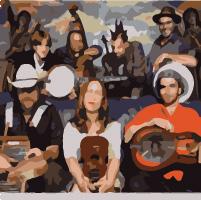
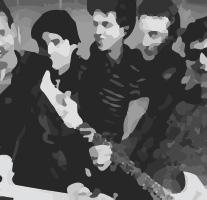




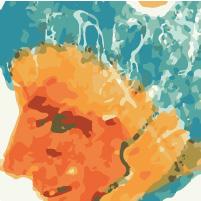
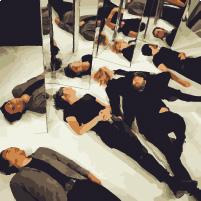
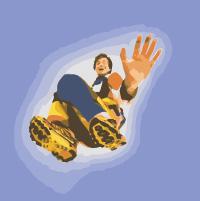



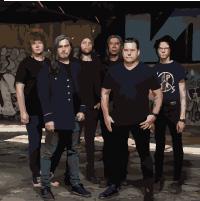
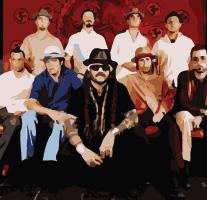
Vaughan performs his last show in Austin, May 4,1990 ( Origional Photo by Tracey Anne Hart)
The theater is packed, and fans, family, and friends gather 33 years after his death to see a film tribute. The energy is electric, the tension palpable, like every time he took the stage in his career. They are here to watch a small part of the commemoration of him and his band, alongside his reason for becoming a musician, his brother. A continuing inspiration to so many people and an influence on young musicians, 30 years after they last played together. They are Double Trouble and Stevie Ray Vaughan.
Stevie Ray Vaughan formed Double Trouble in 1978, bouncing around Austin and playing various clubs for about four years, the lineup varied in those years before finally

settling on the power trio of Vaughan on guitar, Chris Layton on drums, and Tommy Shannon on bass. They had a breakout performance at the Montreux jazz festival in 1982, and even though they received boos from the crowd, their performance caught the
their debut album Texas Flood propelled them to worldwide fame.
Amid Vaughan’s struggles with alcohol and drugs, they continued to tour, though Vaughan eventually recovered from the serious addiction before In Step was recorded
attention of big names like David Bowie and Jackson Browne. This led to producer John H. Hammond signing the trio with Epic Records, and
and released in 1989, he was now better than ever. Sadly, this legendary career came to an end in August 1990. After a legendary performance on August 26th, 1990 with Eric Clapton, Buddy Guy, and Jimmie Vaughan among others, a tragic helicopter crash killed everyone onboard, including Vaughan and members of Clapton’s crew.
Career professional musician, drummer for Double Trouble, and currently for the Kenny Wayne Shepherd Band, Chris Layton, described Vaughans playing.
“He was so good, no matter what was going on, he was always right with you, whatever I might do, he’d be right there. He knew where I was going, It was delightful. It
A Signed Version of the album In Step released in 1989 courtesy of Heritage Auctions
“This guy was famous and excellent, but had his share of struggles like anyone else”
Vaughan performs in Austin, Texas with his signature SRV emblazoned Stratocaster, 1983

was inspiring, and through all the time that we were together and the challenges that we went through you could lose sight of that, you lose sight of how special something is until it’s no longer around. And that hit me pretty hard as the years went on after he was gone.”
Vaughan and Double Trouble’s legacy endures not only in things like statues and recordings but in the hearts and minds of people. In a time when garage bands and live music clubs were a dime a dozen, Double Trouble stood out.
Jody Denberg, A radio DJ in Austin with 42 years of experience in private in public radio and across all genres, said that in the early 80’s, during Double Troubles’ ascendance, the music industry was flourishing.
“Well in the early 1980s a brand of blues rock was really popular in Austin along with The Fabulous Thunderbirds
Stevie Ray Vaughan and Double Trouble in 1983 during their rise to fame and the release of Texas Flood (Left to right: Chris Layton, Stevie Ray Vaughan, Tommy Shannon) Photo by Don Huntstein

and other artists that were playing Antones, but there were other scenes as well.”
Denberg said “There was the punk rock scene that came out of Rauel’s club
According to Layton, Vaughan kept turning around, impressed with Layton’s playing.
“He came over to the apartment the next day. We met and from the first time I’d listened to him, and then played with them. I knew, I told him, I want to work with you. I don’t care how much money we make, don’t care where we do this. I don’t care how we get there. And all I know is that I want to play with you.”
Every band has their own
in Guadeloupe, and there was the New Wave scene that flourished at a venue called Clubfoot in the early 80s, and there were still the remnants of progressive country music, like Willie Nelson and Jerry Jeff Walker. So all of those things were happening at the same time as Double Trouble’s ascendance.’’
Layton said that he ended up playing with Stevie when the current drummer slept late and Layton was brought in as a replacement for several songs until the drummer arrived.
unique way of creating music. According to Layton, Double Trouble created records organically, creating pieces that they all found to be real and good music, and then once several of those were imagined they would put them together into a record. This process led to lots of fans and memories. When asked how he thought their music inspired so many, Layton reasoned that because the band felt inspired by their own music, then maybe it is not so surprising that people listening feel inspired and
“I don’t care how much money we make, don’t care where we do this. I don’t care how we get there. And all I know is that I want to play with you”
enjoy their music. But there was one other thing that made the band
unique, when asked about it Denberg said “No one else played with the attack and the grit and the power of Stevie Ray. So that alone made them a unique band. Were they a unique rhythm section? They had a great rhythm section. I don’t know if they were unique. The uniqueness was all down to the frontman Stevie Ray.” Layton agreed that Vaughan was the driving force behind the uniqueness. According to Layton, even players with the Boston Symphony revered the band.
As for making the records,
every group has their own unique way of creating music. According to Layton, Double Trouble created records organically,
creating pieces that they all found to be real and good music, and then once several of those were imagined they would put them together into a record. This process led to lots of fans, great performances, and irreplaceable memories. These fans led to a legacy of legendary music and performances especially in the blues community, Denberg said of Vaughan’s Legacy. “Stevie Ray’s impact was
 The Statue of SRV that stands in the heart of Austin circa 2017.
The Statue of SRV that stands in the heart of Austin circa 2017.
that he was part of the link in that chain that continues making blues viable for younger people, whether it’s the people that came up in Stevie’s wake like Jonny Lang,
and Kenny Wayne Shepherd, or even the people right now like Christo and Kingfish Ingram, they’re all in a lineage that stretches back to Stevie Ray, and then stretches

back to the guys that invented the form.”
The Legacy of Vaughan and his life is remembered by a sculpture on Town Lake in Austin Texas, that has
“Helmick wanted people to remember the man, not just the musician. While we as a society remember rockstars elevated on pedestals, he wanted to remember Vaughan as an extraordinary guitarist, but also one of us.”
The iconic Paramount Theater in Austin,TX before the Austin premiere of a documentary called Brothers in Blues on Stevie Ray and Jimmie Vaughan

become a key part of the city’s character. Ralph Helmick, career public artist, and the mind behind the statue of Vaughan, wanted to honor Vaughan in a different way than is typical for most musicians. Helmick described the thought behind how he designed the sculpture. “So it’s in a way like the most famous Western sculpture, Michelangelo’s David, in Florence, where he’s contemplating. Before he confronts Goliath,he’s standing there, and there’s a stillness to him and imminence. And I thought, that’s a way to get inside
somebody’s head, and to make them relate to a figure. It’s to occupy that time, even if it’s just an inhalation or exhalation. And so that was one thing I would try to do with Stevie. Having everybody know his music, it’s eternal, it’s digitized. And it’ll be around for a long, long time. And so it was more mission for me was more about honoring the man, as well as the musician. So that’s why this sculpture’s actual figure is in, not repose, exactly. But a still standing figure and the shadow would show him playing guitar as his legacy. So it was a way where people can contemplate Stevie and who the guy was, rather than his music. And I think that struck a chord, so to speak, with Jimmy and Martha. So it was a great opportunity [for me].” Another unique thing about Vaughan that Helmick wanted to remember was how he dressed, which was a key part of his personality. “He dressed very flamboyantly, but he also had a wide ranging wardrobe. So I intentionally chose the poncho and the hat as being the least flashy, of, of what he would wear, and he wore something like that In Step. I think his poncho is pretty timeless, you could be wearing it in the 1800s, or you could be wearing it today, and people wouldn’t think you landed from Mars or anything. He’s also known for wearing bows and giant
feathers in his hat and things like that. His right hand has a ring on it that has a circle with a triangle in it. And that’s a symbol of AA. So, if you’re recovering alcoholic, you might be able to recognize and acknowledge that this guy was famous and excellent, but had his share of struggles like anyone else.”
It was very important to Mr. Helmick, and the family, to include the ring with the symbol of AA, to symbolize his recovery and the fact that he beat his addiction as a person. Helmick wanted people to remember the man, not just the musician. While we as a society remember rockstars elevated on pedestals, he wanted to remember Vaughan as an extraordinary guitarist, but also one of us.
The legacy of Double Trouble and Vaughan lives on in records, and recordings, notable ones like their performance at the Elmocambo or Montreux, and unpublished ones like the Tower Theater. Everyone agrees: “no one else played with the attack and the grit and the power of Stevie Ray.”
There are four main factors taken into account when determining a venue’s suitability for concerts. Sound, Seating, Feel, and Location. These factors all determine if a venue fits with an artist or genre. To create the ultimate live concert experience, the venue is key as well as the band.

If all great venues had only one thing in common it would be sound. The most important requirement of a venue is sound. The acoustics of a venue are designed by sound engineers and architects and can be mitigated or enhanced depending on the concert, this sound profile is specific to a venue. The sound is then fine tuned by either in house engineers or a bands own sound engineer to optimize both the sound quality in the seats, and the sound quality in musicians ears.

Seating is more important than you might think in making a great venue. A good venue has a mix of seating options so that fans can choose which one they would rather buy. It is also key for an artist to sell out a venue. It is both better for the artist and the fans to play and listen in a packed electric atmosphere than in a mostly empty arena. Additionally, a wide variety of ticket costs via better or worse seats helps fans of all means make it to see their favorite band live.
Where a venue is placed impacts the draw of people and the concert itself. A rapper might do better touring in large cities, and a Bluegrass band might draw more people touring in more rural areas. Exclusive concert locations can tend to draw different fans.
The feel and aesthetics of a venue contribute to how well it fits with a band. Certain venues become known by the artists that play at them, or certain artists become known for their legendary performances at a venue. An example being Billy Joel and his famed performances at Madison Square Garden. Additionally a huge stadium tour has a much different feel than touring local bars, so artists have to pick and choose to match their music and feel. The type of event also matters in venue selection, Rihanna probably wouldn’t fit with the Houston Rodeo, but Garth Brooks would. Small things such as the history and aesthetics of the venue have a huge impact on making the “perfect” performance.
The world of music creation and performance is constantly changing. For producers, more software and equipment is always coming out and being used. For tour organizers, there are always new and changing incentives for live performance.

Matt Noveskey, the bassist for the band Blue October and producer at Orb Recording Studios, is a longtime
musician. He gave a look into the lifestyle of the music industry.
The idea began with a band mate at the time, C.B. Hudson. “At the time, there weren’t many options here for being such a musical city, there weren’t a lot of commercial studios,” Noveskey stated while talking about getting the studio setup. “So we said, ‘Well, why don’t we do something that
“Our old guitar player, and one of my closest friends, he and I started just putting a plan together,” he described, talking about the dream they shared more than a decade ago. “Because He had always wanted to build a studio, he had a lot of equipment. And he had a really nice setup in his old house.”
It would soon become a reality, as the two bandmates
set up shop in Austin, Texas.
“Then we built it all from the ground up, man. It was a long, grueling process, but it’s been almost 10 years now that we’ve been open, which is insane to me,” Novesky said. “And it’s been very, very good. Very successful.“
Through his efforts with C.B., he would end up creating one of Austin’s signature studios and work with prolific artists.


“Just getting to be a fly on the wall with artists like Justin Bieber, just absolutely amazing. I can tell you firsthand, he’s one of the most talented people I’ve ever witnessed in my life,” he mentioned when asked about artists he’s worked with.
When asked how being a producer has changed over time, Noveskey said that the process has become more involved for people like him.
“It really was kind of more of a facilitator role where you hired the band, you made sure everyone was on time, he made sure that they had charts, because back then you were tracking a band live together in a big room,” said Noveskey. “The producer was kinda like the director.”
“What’s happened since then is that the producer sort of became the extra member of the band, who has the final say on decisions and things like that, and would essentially step in and become the person that ties everything together and helps the band make decisions as far as what songs we’re going to do. Is the structure correct? Have you finished the songs, you may think the song is finished, but
should you rewrite a chorus, should you do this to change the key of the song, and then on for everything and anything in between there.”
Noveskey said that a more realistic idea of a modern producer is Phineas with Billie Eilish. Phineas is much more active in the creative process than producers in the past.
“That is an incredibly hands-on creative role. It’s become way more producing, engineering and controlling. I’m pressing buttons and making decisions, as opposed to back in the day when the producer could walk in halfway through the day.”
Strangely enough, as technology has improved, the job of a producer has become much more involved. In most positions, these advancements can make a job more efficient and easier; however, for a producer, the new tech has added more possibilities and responsibility to the profession. Noveskey spoke more on this change.
“The role of the producer has started to become this thing, where the producer is really what I call a bed maker, where you make the beats, you help make the whole music bed, you help with the song from scratch, and then you may have a singer come in and do what’s called a top line
where they come in, and write and record their vocal to an existing melody and existing beat.” Noveskey said Along with the advancements in prestigious studios, we’ve also seen music software in recent years that can allow the magic of a studio to reside on a laptop. “I think it’s great,” the bassist said. “We
Matt Noveskey on bass for Blue October. Photo credit to Gustavo Canlesused to record on tape. And it was a much different process, it was much more expensive, and it was much more time consuming.” He later talked about the initial resistance against the digital age.
“In the early days of Pro Tools, it had a kind of a digital sound quality to it that a lot of people resisted. So tape was the purest way to do it, and it sounds so good, and blah, blah, blah. There’s still a valid argument there. But I think that you can’t fight these things, you can’t fight these changes. And the fact is it when technology gets better and faster and easier to do, and easier to work with,” he mentioned, reflecting on what it was like seeing technology change.
While Noveskey talked to great lengths about the pros of the new software, he also mentioned the potential cons of being able to put out anything made from anywhere everywhere.
“I think that it is a good thing because it shouldn’t just be the elite that get signed to a record label and only they can earn the right to make a record and put it out. I think anybody should be able to do that and then let the best rise to the top.”
“The flip side to that is there’s so much music out there. Discovery used to be a different thing. When you used to discover music, it was usually on the radio, etc, etc. Now, you have playlists on Spotify, and you have all these other things where people are discovering music. And I think that as long as there are filters in place, I think that’s a good thing. The
problem can be that there’s so much music out there, that there’s a lot of really not very good quality music, because it’s so easy to release now.”
Despite this, Noveskey still has a positive embrace for the new tech. He believes that there will always be a demand for studio spaces like his own in the world of music production. With the high quality of equipment and software, it’s a hard point to argue.
at any given time,” said Pannes. He went on to explain how selection begins to narrow by using predicted ticket sales.
“Only a handful of bands can actually sell a stadium. The Rolling Stones, stadiums all day long Coldplay, arenas. Coldplay is going to sell 18,000, whereas The Stones are going to sell 70,000.” He said choosing the right band for your venue size is key.
Using factors like tour locations, local appeal, and stadium size, Pannes’ team can determine whos going to be on stage. “A band that can sell 18,000 is probably not doing a 10,000 seat amphitheater.” With these factors, a venue booker like Glen Wedgewood, who books for Germania, can decide who’s performing and when. “Part of Glen’s job is kind of crystal balling it to say who is going to be considered a marquee name, that’s gonna have a big, big mass appeal.”
After their music is finalized in the studio, an artist will most likely perform it on stage, usually as part of an album tour. But how does this get planned?
Mark Pannes, president for strategy and corporate growth at the Circuit of the Americas, works side by side with those that get artists on their stage, Germania Amphitheater. He described the details of getting larger artists like Billy Joel and Green Day.
“Part of the band selection is really who’s touring
Zach Ernst, a venue booker at the Paramount, has worked for around a decade on getting artists on stage. He spoke about the staffing needs of venues like Antones and the Paramount.
“Usually an artist will travel with at least one crew person who would be the tour manager even at the small club level. Definitely at the Paramount we are a union house and we hire crew so even if they bring a crew in we have somebody there with them on our side as well,” Ernst said.
He explained that a large part of the responsibilities of hosting a show falls on the artist. Any special audio set-ups,
“It shouldn’t just be the elite that get signed to a record label and only they can earn the right to make a record to put out. I think anybody should be able to do that and then let the best rise to the top.”
screens or light shows are to be brought in and built by the artists teams.
“If it’s a solo artist, maybe they come by themselves, or they come with just one other person. But then if it’s a big band, then they’ve got a crew, and as a result, we have to step up.”
When asked about his favorite part of the job, He talked about being a part of the performance. “I definitely love seeing legendary artists, I love to see people who are up and coming, you know. Any great music, I do love to witness in person. And that’s really something that we missed during COVID,” Ernst answered. “But I love these little moments of being a fly on the wall when an artist comes from the greenroom to the stage or being with the crowd when the artist decides to come out for an encore”
He also talked about helping out the artists he works with. ”This artist that I really love, they need cash and they
need it before the show starts and I’m the one giving them the cash or I’m the one bringing barbecue to the greenroom,” Ernst said. “There are just a lot of moments and memories that you can make when you work in this business that I really cherish. The things that maybe the artists that the audience doesn’t see. Those candid moments are always really special.”
Over the past years, Ernst has worked with many of his favorite Austin artists and seen what they are like behind the scenes. “At the Paramount I hosted a few Allen Tucson shows. He’s a legendary New Orleans songwriter and piano player and producer. We just had Mavis Staples at Antone’s. She’s been around the Paramount on my watch a few times and got to know her. That’s all my favorite music is, you know, largely rooted in the 50s, 60s, and 70s. Whether it’s Dr. John or Herbie Hancock or Paul Anka, there’s a lot of crazy stuff that I get to see at these
venues.”

“I’m 36 now I started being really into music, probably 20 years ago, and so I just love to see the legends and, and I love to book them and bring, a lot of these artists, maybe haven’t played in Austin for a while or unfortunately, sometimes it’s their last show and that leads me to want to give everyone a really amazing experience playing at Paramount or Antone’s and taking great care of the bands. There’s just a lot of really good memories that come when you do this as long as I have.“ He reflected.
The world of music making and performance is constantly changing and adapting to our current world. Whether it be through new software to aid your creativity or new financial incentives to tour, People like Matt Noveskey, Zach Ernst, and Mark Pannes will always be finding ways to make the listening experience best for the consumer.
Los Lonely Boys Performing at The Paramount Theatre.In 1975, Antone’s nightclub was opened and a record shop of the same name was opened to act as a headquarters for the club. With a build that looks straight out of “Grease”, Antone’s has some of the best used stock in town.

Waterloo Records opened in 1982 and has become an Austin landmark for music enjoyers. The current owner of the store is John Kunz.
38%
From CD’s to vinyls, Waterloo keeps their stock diverse so that everyone will find something they enjoy.
Breakaway Records keeps it retro, and is the current home to some of the coolest older records. Opened in 2007, Breakaway became a home base for trading and selling records.
rise! Here’s where vinyl. From the Austin newly opened, we got it austin!

End of an Ear is a self proclaimed cozy record shop out in South Austin. This store has the usual stock, but caters to those trying to get those new and rare records.
End of an Ear Est 2005
Started in 2005 by owners Dan Plunkett and Blake Carlisle, this store has become one of Austin’s most beloved.
Est. 2006
11%
of students say they own vinyl records
Breakaway Record s

1.00% Safe! Go 200 mph while playing at 200 bpm!

Pesky helmets not reqired!
Learn to play and drive! Race and play a concert at the same time! Lessons starting at $19.76! We have certified insturctors as of next year! Drive the fastest rustbuckets around! It’s cheap cause we don’t have insurance! No waivers, get on the track immediatley. Our cleanup crews are top notch, the vultures always pick up any scraps!
Sound:Tracked | 49
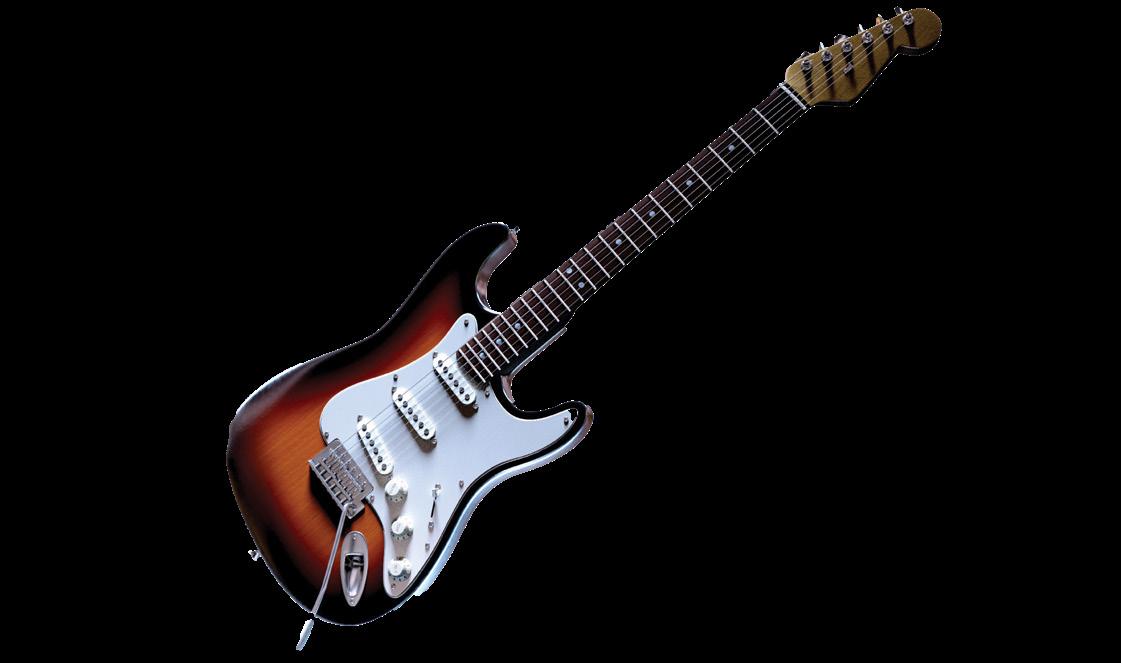
Do you have ears? Do you like music? Can you read? If so, you should read this magazine! Featuring: The state of Austin’s music scene, the inner workings of instrument production and repair, the legacy of Stevie Ray Vaughan, details on he band Fugazi, and behind the scenes on venues and studios.
Entertaining and dynamic, with information about records, movie music and its history, the transmission and reproduction of music through the ages of humanity, the characteristics of great venues, and even finding your ideal Austin band. All this and more in 52 great pages of interesting stories, fascinating graphics, and photos.
Reviews:
“Ok ok we can work with this”- Ms. Baldwin
“Guys this needs some work but it can still turn out well”
- Ms. Baldwin
“Alright, passing is a good goal, let’s work towards that, keep on it guys” - Ms. Baldwin
“Y’all are really falling behind” - Ms. Baldwin
“Alright let’s try and not get a zero” - Ms. Baldwin
“Four pages is not a magazine”- Ms. Baldwin
“Acceptable losses”- Ms. Baldwin
Ezine Spring 2023 Sound:Tracked